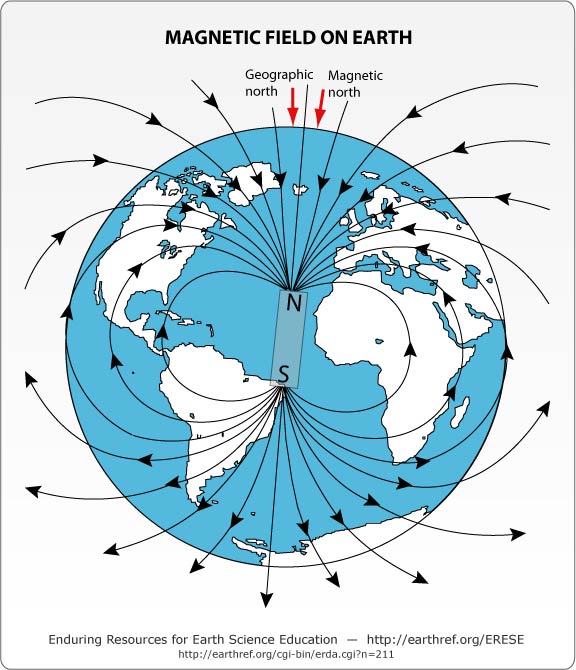
GOLF 1-8-2 Antarctica Expedition 2006/2007
Compass Confusion
How many geologists does it take to read a compass? It takes at least a few. Compass measurements at high latitudes leave us scratching our heads. Find out why this seemingly simple task is not as straightforward as you might think ...
The Problem
The compass is a very useful navigational tool. When we collect geologic samples in the lower latitudes, we use a Brunton compass to orient ourselves and to orient our samples. The faithful compass needle always points to the north, right? Well, sort of. It always points to the magnetic north. In very high latitudes, compass directions can be a bit of a brainteaser. Why?

Declination
Declination is the angle between true north and the magnetic north at any given point on the globe. Yes! There are two different 'norths'! True north is determined by the Earth’s rotational axis, whereas the magnetic north is defined as the position on the globe where the geomagnetic field lines point vertical down. Similarly, there is a true south determined by the rotational axis and a magnetic south pole, where the geomagnetic field lines point vertical up. Here at McMurdo Station, we are located north of the geographic pole, but south of the magnetic pole! Our compass needles (before being corrected for the 144 degree declination) point to the south!
Inclination
Magnetic field lines near the equator point more or less horizontal, but by definition, magnetic field lines at the South Pole point vertical up (and vertical down at the North Pole). A compass needle wants to align itself with the ambient magnetic field. When we take a compass reading in lower latitudes (closer to the equator) the compass needle swings freely on its pivot, but if we were to use that same compass in Antarctica, the north end of the compass needle becomes pinned up against the glass faceplate! This vertical component of the magnetic field is known as 'inclination'. Thankfully, the Berg Field Center at McMurdo Station supplies us with compasses that are specially weighted to offset this effect, that equates about -81 degrees.
| North magnetic pole | 83.8°N, –122.0°E | |
| South magnetic pole | -64.5°N, 137.8°E | |
| Our location at the station | -77.8°N, 166.6°E | |
| Declination at McMurdo | About 144 degrees | |
| Inclination at McMurdo | About -81 degrees |

So, why is there this difference between the true north pole and the magnetic north pole in the first place? Click here to learn more about secular variation.
Elise Sbarbori
| GOLF 1-8-2 Antarctica Expedition Home Page |